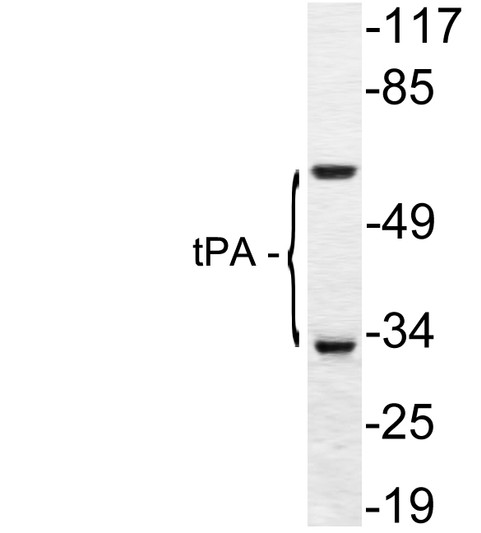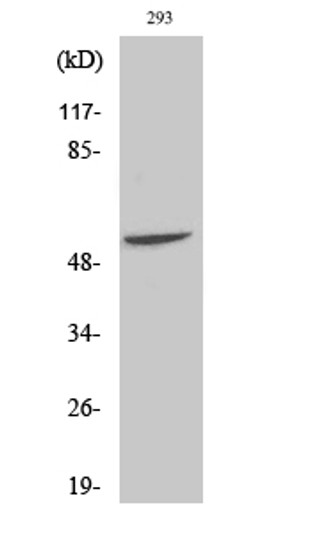| Post Translational Modifications | The single chain, almost fully active enzyme, can be further processed into a two-chain fully active form by a cleavage after Arg-310 catalyzed by plasmin, tissue kallikrein or factor Xa. Differential cell-specific N-linked glycosylation gives rise to two glycoforms, type I (glycosylated at Asn-219) and type II (not glycosylated at Asn-219). The single chain type I glycoform is less readily converted into the two-chain form by plasmin, and the two-chain type I glycoform has a lower activity than the two-chain type II glycoform in the presence of fibrin. N-glycosylation of Asn-152.the bound oligomannosidic glycan is involved in the interaction with the mannose receptor. Characterization of O-linked glycan was studied in Bowes melanoma cell line. |
| Function | Converts the abundant, but inactive, zymogen plasminogen to plasmin by hydrolyzing a single Arg-Val bond in plasminogen. By controlling plasmin-mediated proteolysis, it plays an important role in tissue remodeling and degradation, in cell migration and many other physiopathological events. During oocyte activation, plays a role in cortical granule reaction in the zona reaction, which contributes to the block to polyspermy. |
| Protein Name | Tissue-Type Plasminogen ActivatorT-PaT-Plasminogen ActivatorTpaAlteplaseReteplase Cleaved Into - Tissue-Type Plasminogen Activator Chain A - Tissue-Type Plasminogen Activator Chain B |
| Database Links | Reactome: R-HSA-186797Reactome: R-HSA-75205 |
| Cellular Localisation | SecretedExtracellular Space |
| Alternative Antibody Names | Anti-Tissue-Type Plasminogen Activator antibodyAnti-T-Pa antibodyAnti-T-Plasminogen Activator antibodyAnti-Tpa antibodyAnti-Alteplase antibodyAnti-Reteplase Cleaved Into - Tissue-Type Plasminogen Activator Chain A - Tissue-Type Plasminogen Activator Chain B antibodyAnti-PLAT antibody |
Information sourced from Uniprot.org










